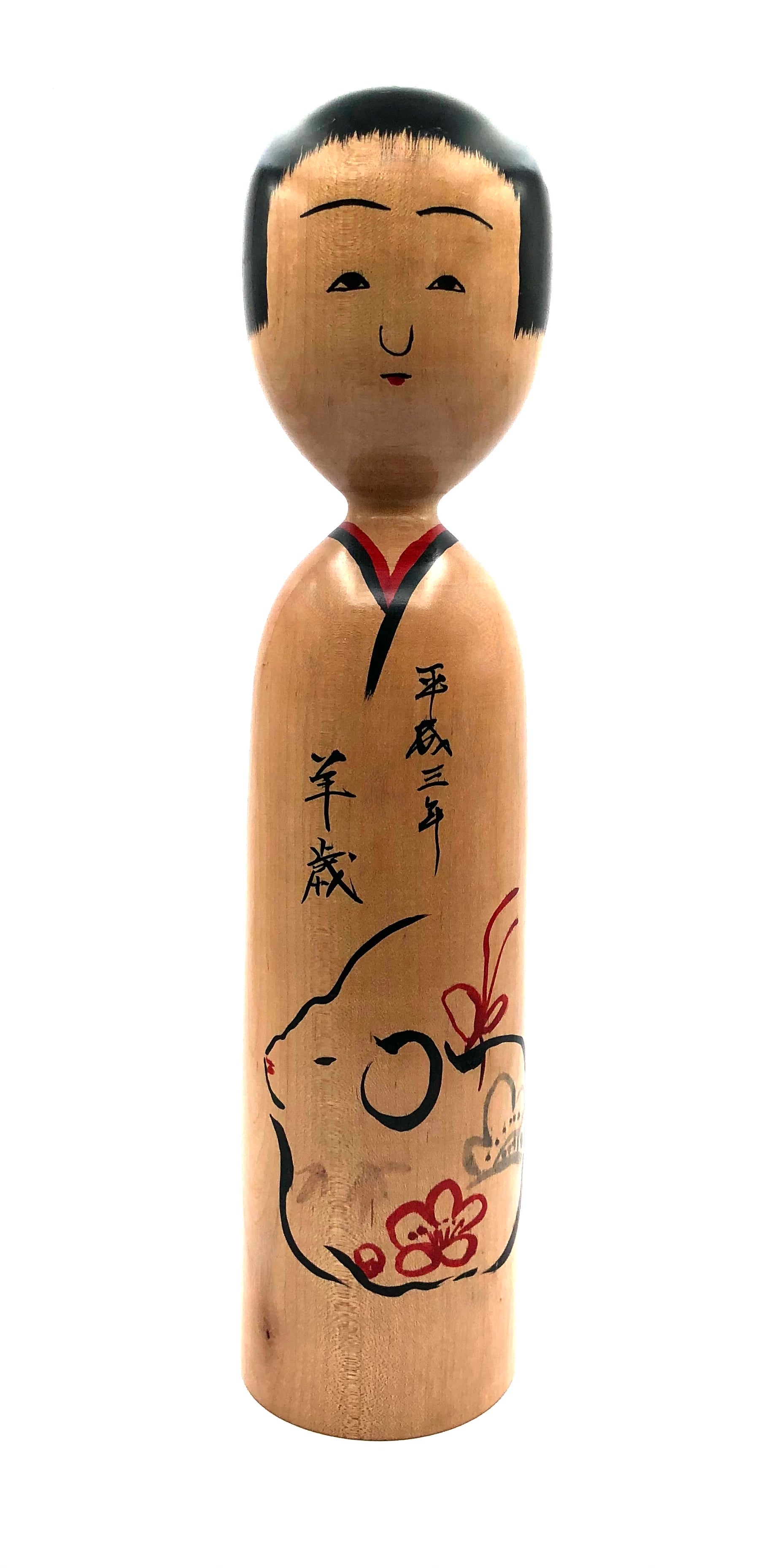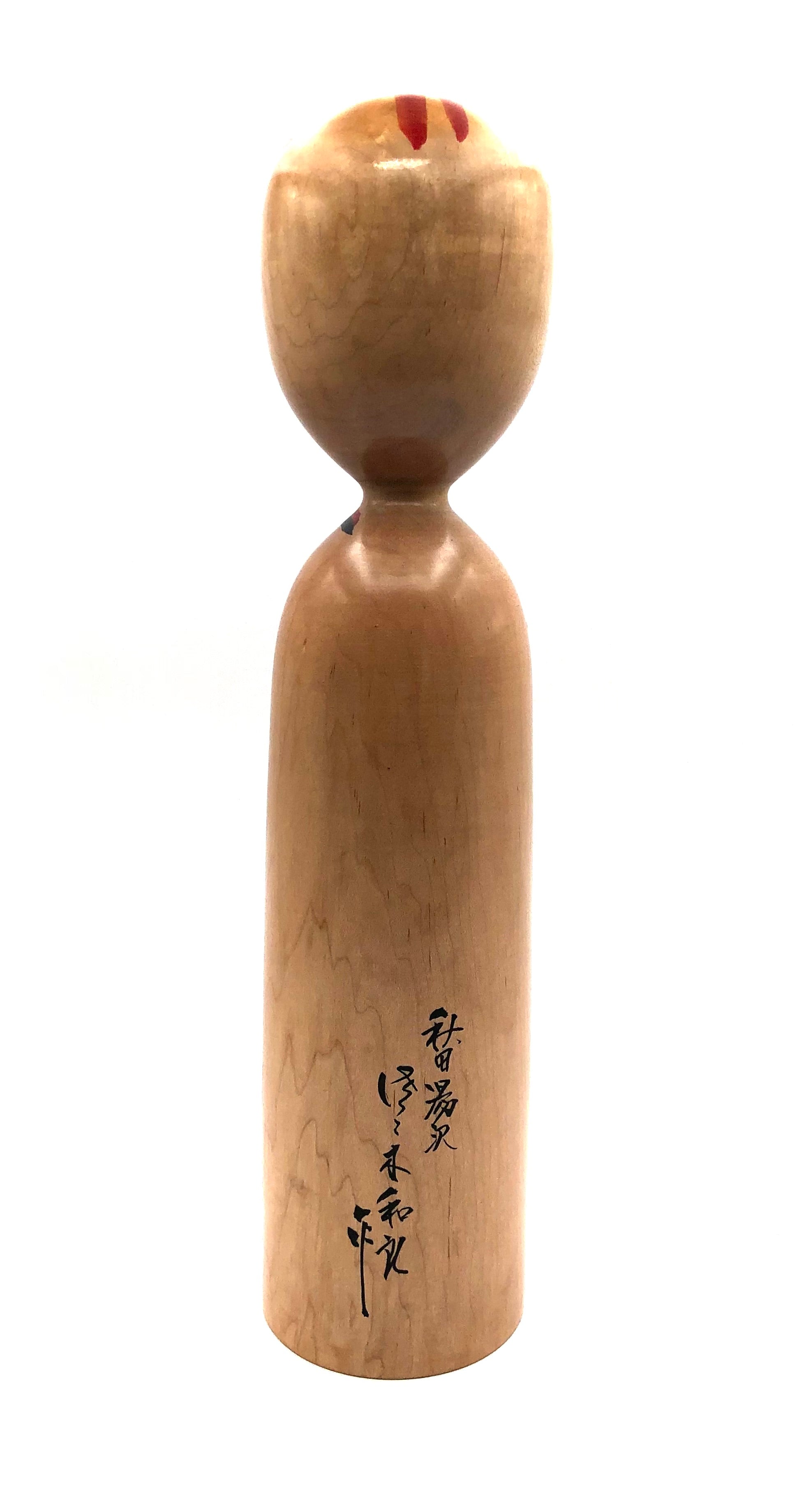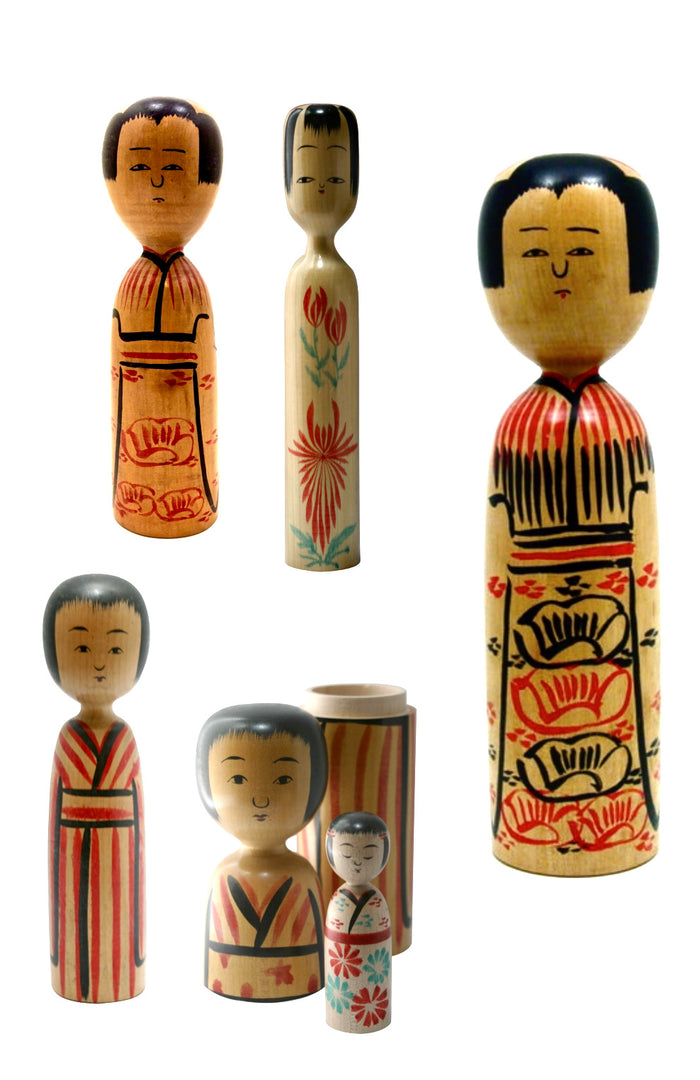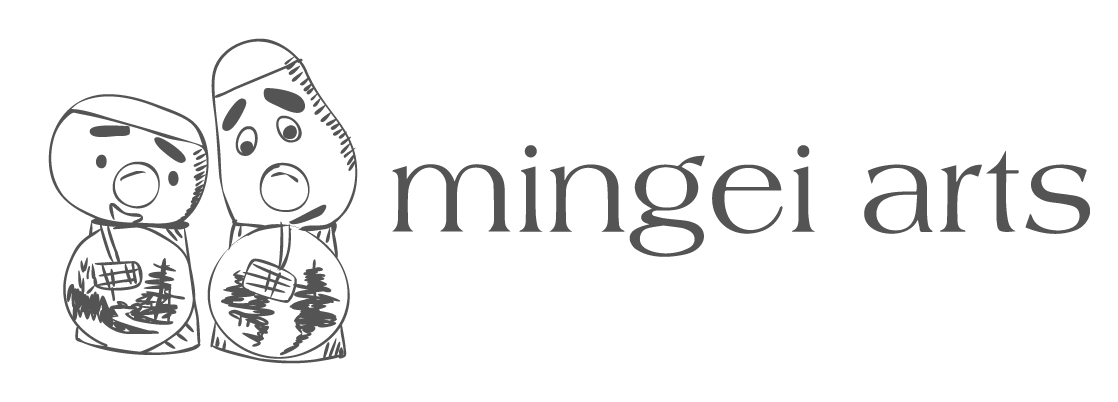

Vintage Japanese Kijiyama style Kokeshi of the Sheep (Hitsuji) by Sato Hideichi (1927-2009)
Dimensions: 15-1/4’h
Sato-san made very few zodiac-inspired dolls other than for the child of a special client, or celebrations associated with celebrations such as seasonal festivals focused on how the Year of the Sheep was named and folklore stories. Our only source records that Sato, Hideichi was a master craftsman and whose only son apprenticed with him throughout his career while establishing the basis for the Kijiyama Kokeshi. This creative interpretation of the sheep/goat is characteristic of the Japanese representation of this elegant creature within the traditional family style. In the Buddhist Shinto sect, the sheep was always the symbol of sacrifice, good luck, and good fortune, and honored in many ways in shrines, festivals, artwork, sculpture, (wood and ceramic), and folklore. Within a 60-year zodiac cycle, the Year of the Sheep repeats “Earth sheep, Metal sheep; Water sheep, Wood sheep, and Fire sheep”. The doll is signed on the back by Sato, Hideichi. This doll has the zodiac identification on the front of the doll as well as details related to the Kijiyama family on the back. As with people born in the year of the Sheep, this doll is exquisite and celebrates Sheep, (Hitsuji), with a creative and beautiful Sumi-ē line drawing featured on the front illustrating this woolly and compassionate animal.
The sheep's expressive face and horn are celebrated on this figure along with a plum blossom associated with the Ogura family, which was commonly used on earlier versions of this doll, emphasizing the passionate feeling about nature. Kijiyama heads as with this doll look like an inverted egg, with a red bow on top and feathered bangs and side hair fringes. The body possesses a Kimono-like painted design and is indicated by two lines representing the collar and red lines of the undergarment. Despite the doll's slightly sad look, the Kikiyama doll remains very appealing and sought after for its well-defined style. The doll indicates the zodiac name and the year it was celebrated and created.
For more information on Kijiyman family of dolls go to: https://mingeiarts.com/collections/kijiyama-kei-family
Vintage Condition: Beautiful, excellent meaning that the piece retains its original craft/workmanship showing a wonderful-developed patina commensurate which suggests a degree of wear, and is void of damage, cracks, spoilage and corresponds to its vintage and meets all the standards of the collectible Traditional Kijiyama Kokeshi.

Japanese Traditional Kokeshi
Kijiyama-Kei (Family)
Prefecture: Akita
Origin:
One of the most readily recognizable traditional dolls is the Kijiyama type, from the region of the same name in the Akita Prefecture. The name is derived from the wood craftsmen (Kiji-ya), who live in the remote mountains of the Tohoku region. The actual location of Kijiyama is so remote that it was inaccessible in the harsh winter months. Many of the kokeshi makers left and settled in the less remote areas of Kawazura, now part of Inagawa-machi. Some suggest that the dignified, lonely look on the faces of Kiiyama kokeshi reflects the lonesome past of their birthplace.
Collector's note – characteristics / painting style:
Despite the slightly sad look some of these kokeshi have, they are very appealing and sought after for their well-defined style. Their elongated “inverted egg” shaped head is attached to a relatively chunky body, both of which are well proportioned. They typically have a red hair ribbon-like motif, but some can be without any hair ribbon (Okappa style), with a “bobbed” hairstyle and half or full moon bangs across the forehead. The eyes can be shut or partially closed (tsubushi-me), or fully opened, and may or may not have eyebrows. Their nose shapes are typically rounded, with small single or double-line lips. The most common motif on the body incorporates chrysanthemums, which were common in the earlier versions. Plum blossoms are seen on those dolls, which are closely associated with the Ogura family. The body usually possesses a kimono-like painted design in several distinctive patterns, suggesting an apron (maedare), over the kimono, which was incorporated later in the doll's development. Additionally, a striped overall patterned kimono-clad is seen as an alternative to the apron. Some have what is called a Kasuri pattern using a kanji symbol. Most Kijiyama dolls demonstrate the same state of being within this style of Kokeshi.

Leading Craftsmen:
Abe, Heishiro, 1929-2013, (Inagawa, Akita) - Master: Takahashi, Heijiro. No additional published information
Abe, Yoko, 1932, (Yuzaya, Akita) - Master: Abe, Heishiro. No additional published information
Honma, Isao, 1935. The third son of Shimazo and Rio Honma is a schoolteacher in Tsubakigawa, Higashinaruse Village, Ogachi District, and Akita Prefecture. His family owned forestland, so he loved woodworking from elementary school, making wooden carvings including Kokeshi, bears, and furniture. No additional published information.
Igawa, Takemitsu, 1925-2008, (Inagawa Akita) - Master: Ozeki, Kyutaro. No additional published information.
Kitayama, Kenichi - No additional published information
Koyasu, Ichigoro - No additional published information
Onodera, Masanori, 1948-2018. Kijiyama lineage, Master: Tokuichi Onodera. The eldest son of Onodera Tokuichi in Odate, Kawatsuraya, Akita Prefecture. The Onodera family had been lacquer artists in Kawatsuraya for generations. It is said that Fujimi (childhood name Umetaro), who was a lacquer artist, innovated the painting and decorating Kokeshi dolls and started the painting method of apron. After graduating from the Yuzawa Kita branch school, Masanori worked as a lacquer artist for two years and then studied woodworking for one year. He learned lathe working from his father Tokuichi. No additional published information.
Ogura, Kyutaro, 1906-1998, Grand Master (Minase, Akita) - Master: Ogura, Kyushiro. No additional published information
Ogura, Tomezo, 1909, (Inagawa, Akita) - Master Ogura, Kyushiro. No additional published information
Onodera, Juichi, 1908, (Inagawa, Akita) - Master Ogura, Keitaro. No additional published information
Sato, Hideichi, 1927, (Inagawa, Akta), Master Sato, Kaneichi. No additional published information
Shibata, Ryoji, 1944, (Inagawa, Akita)) - Master Shibata, Tetsuzo. The second son of Keijiro Ogura and Mura in Yafumae, Odate, Kawatsurē Village, Akita Prefecture, and in 1958, at the age of 15, he made a Kijiyama doll which influenced his lifetime profession throughout his life. No additional published information is available.
Suzuki, Koutaro, 1922-1989, (Inagawa, Akita) - Master Takahashi, Heijiro. No other published information.
Takahashi, Yuji, 1934 - No additional published information.
Explore & Learn More about Kijiyama-Kei (Family)